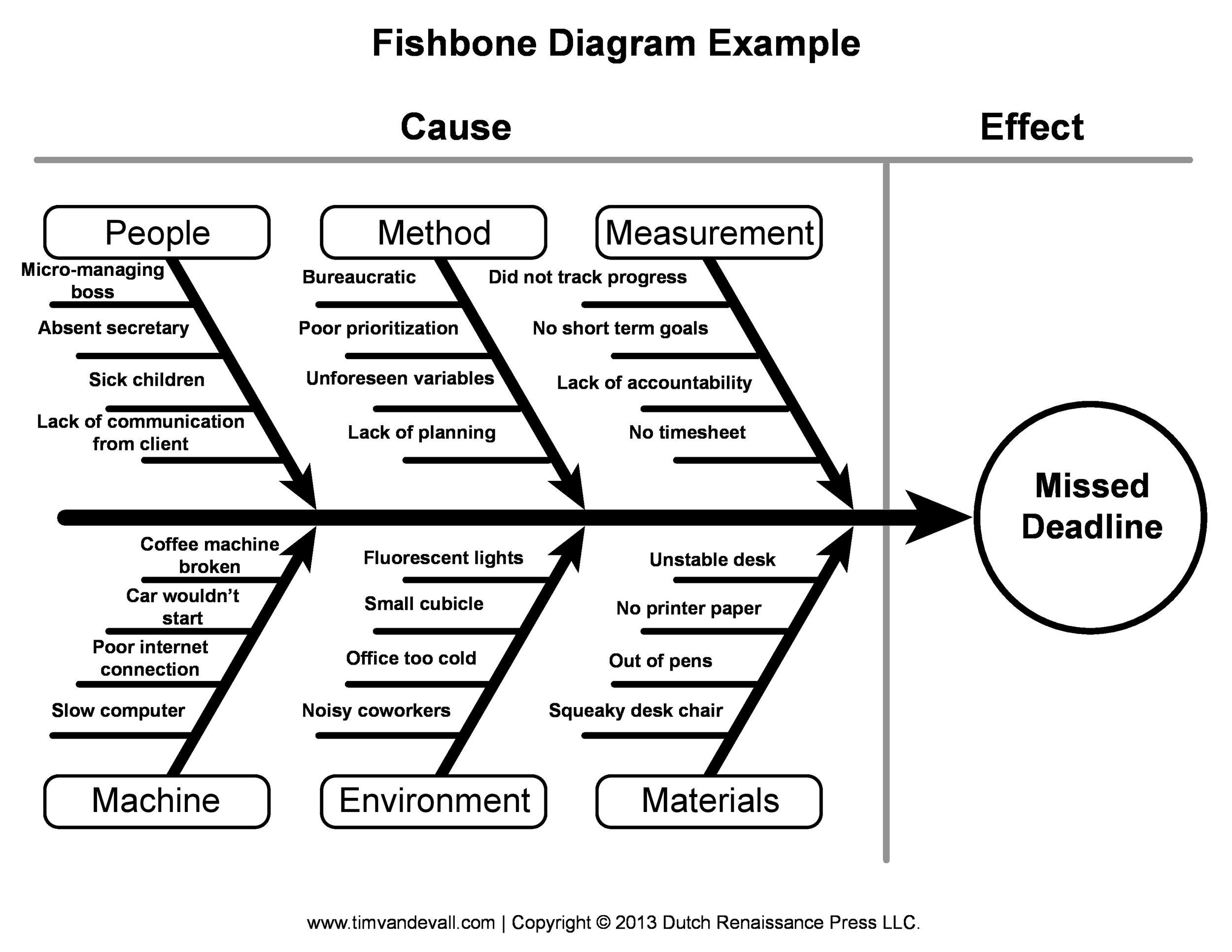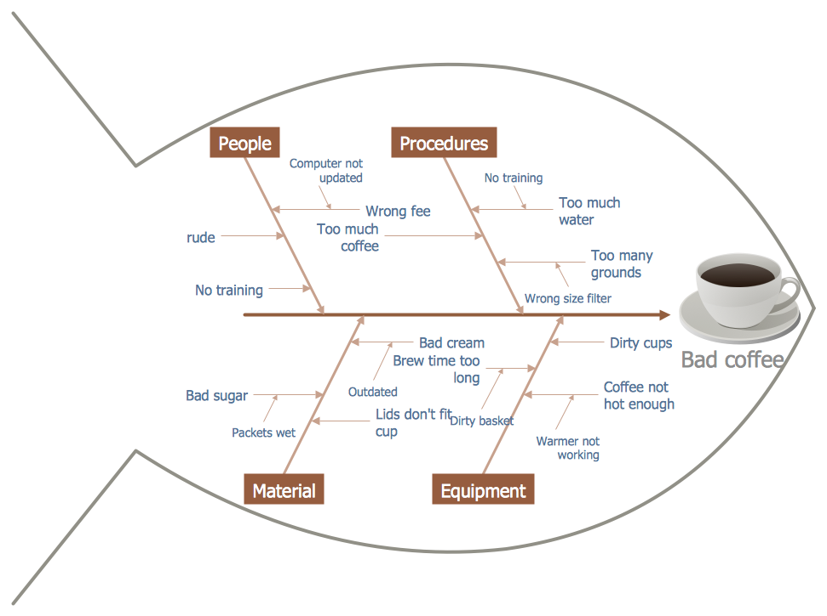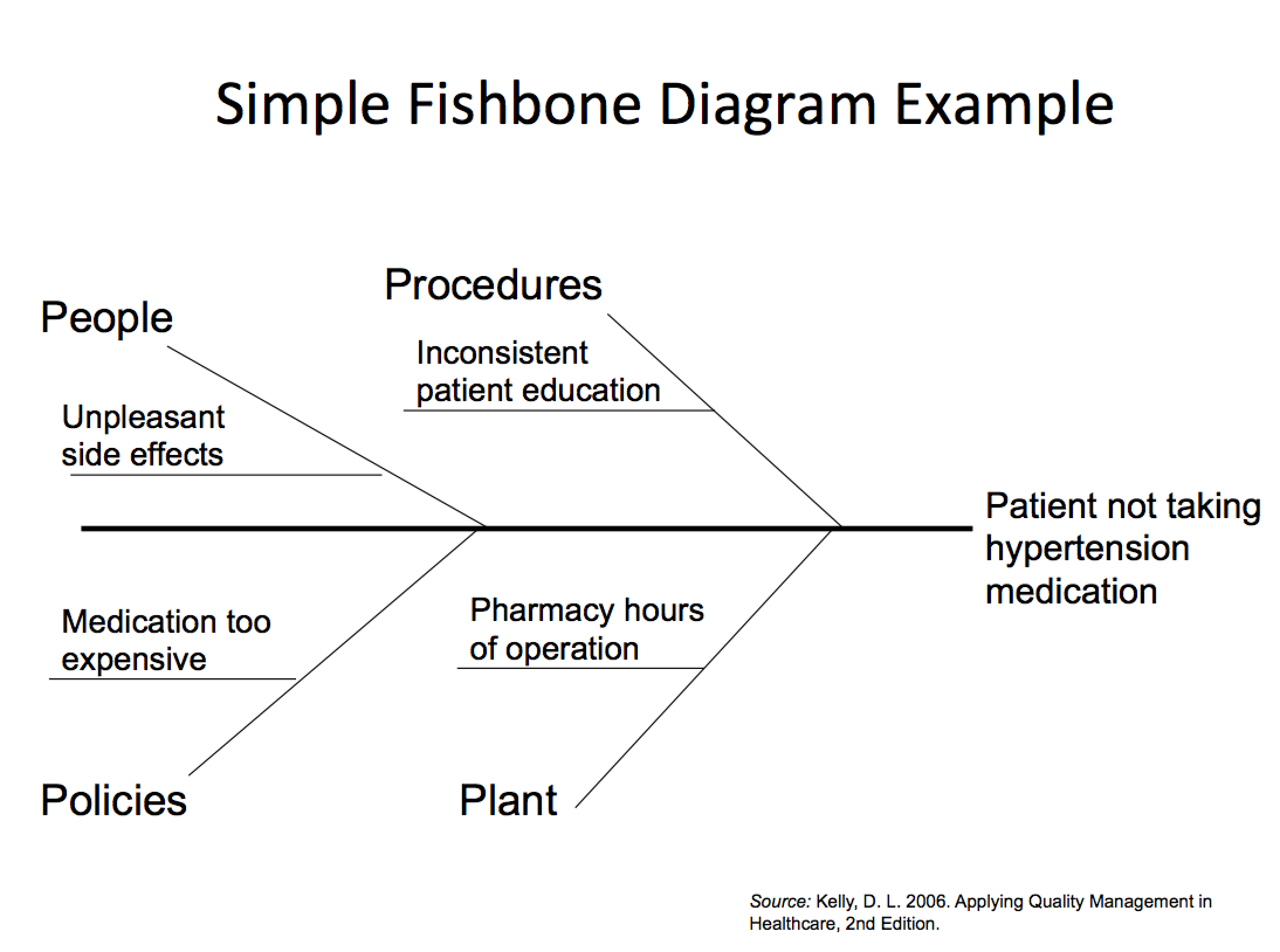

There are a few situations where you should use a different form of data visualization instead of fishbone diagrams.

Return to Table of Contents When not to use a fishbone diagram You can customize this fishbone diagram template to develop concrete plans for improving customer satisfaction: By referencing a fishbone diagram, teams can better identify the best methods for reaching desired outcomes and plan actions accordingly. Planning for desired outcomesįishbone diagrams are also helpful for future planning. Teams can identify where mistakes are being made, revenue is being lost, as well as what activities are leading to the best results.

If teams are primarily focused on KPIs, these diagrams can provide context that is otherwise missing, helping folks better understand what’s causing numbers to rise or fall. They are ideal for addressing complex problems that have multiple causes, such as climate change:ĬREATE THIS DIAGRAM TEMPLATE Facilitating reflective analysisįishbone diagrams are useful for reflective analysis. The most important thing about these diagrams is that they help teams recognize the reasons behind specific outcomes, or in other words-the root causes that lead to effects. Addressing complex problemsĪs you can see, the fishbone diagram example above allows a viewer to see several factors at once, making it a great diagram for sharing a lot of complex information. Here’s what fishbone diagrams are best used for. Return to Table of Contents When to use a fishbone diagram For example, this one lists different factors that can lead to a healthy lifestyle.
SIMPLE FISHBONE DIAGRAM EXAMPLE HOW TO


 0 kommentar(er)
0 kommentar(er)
